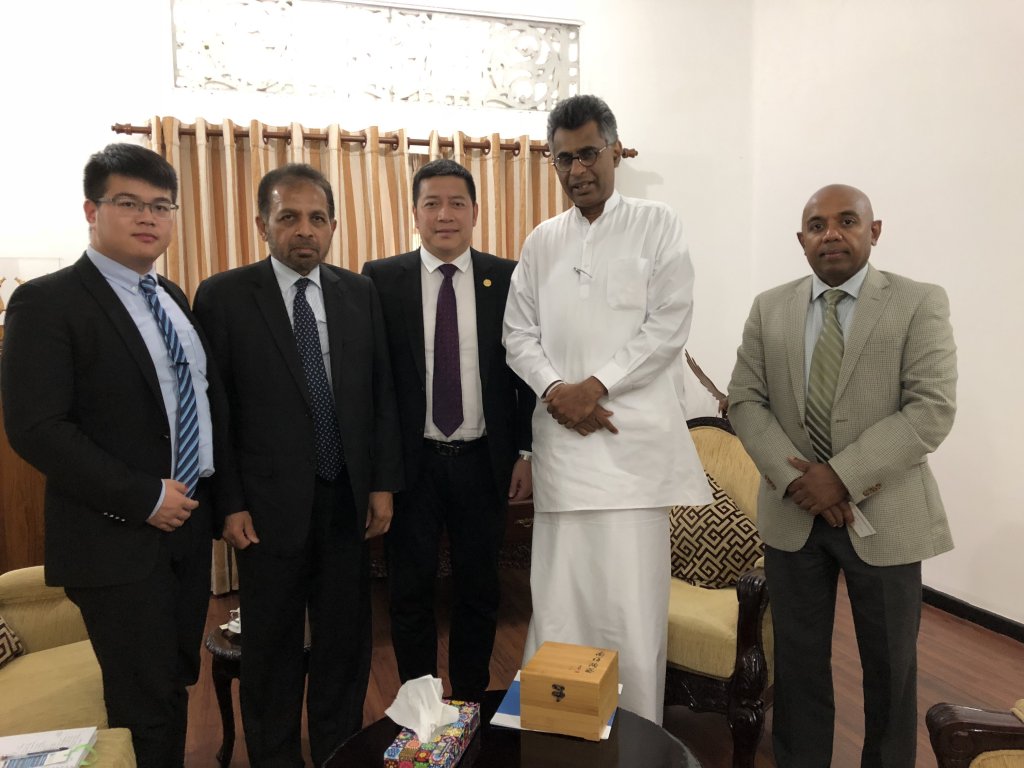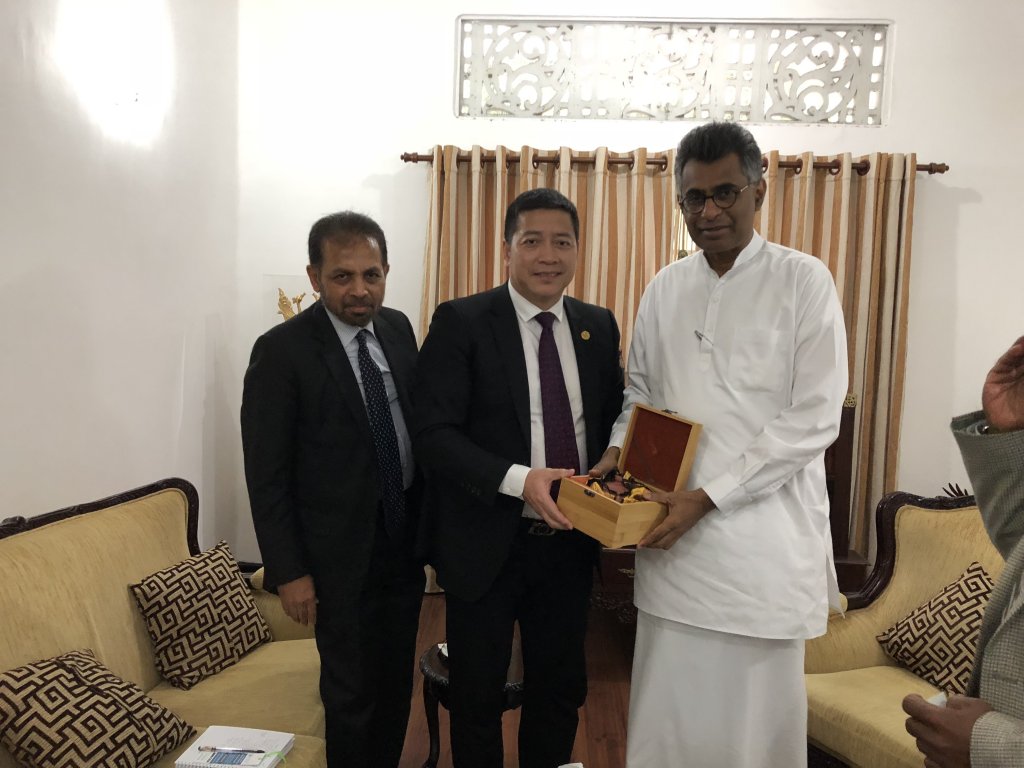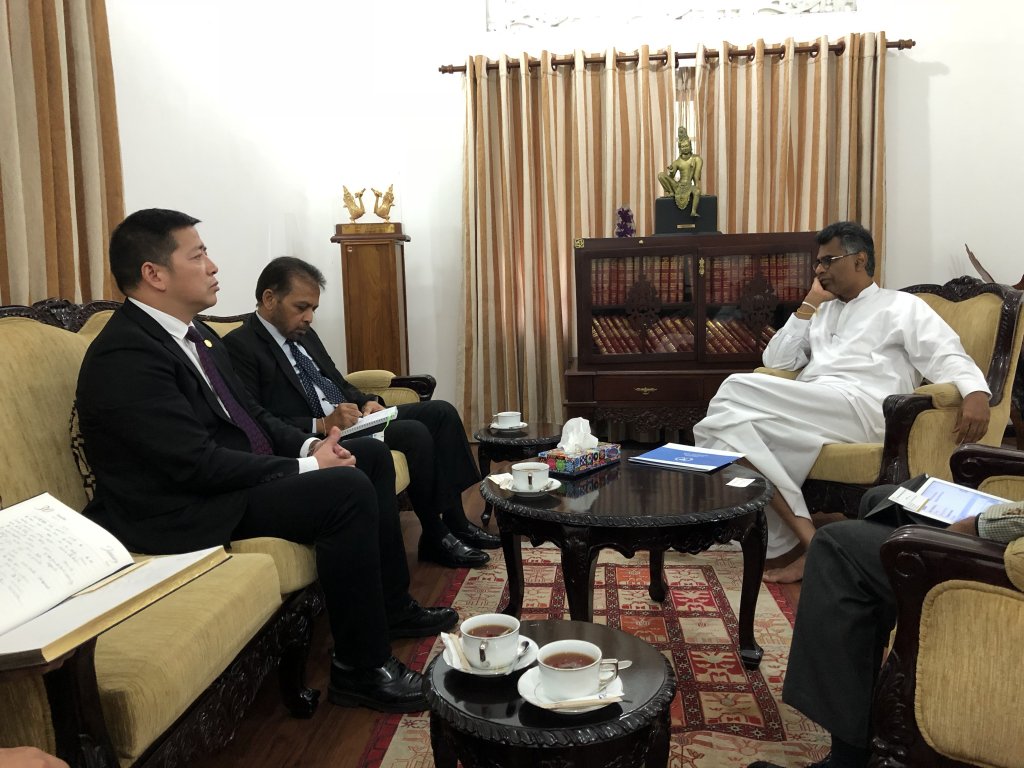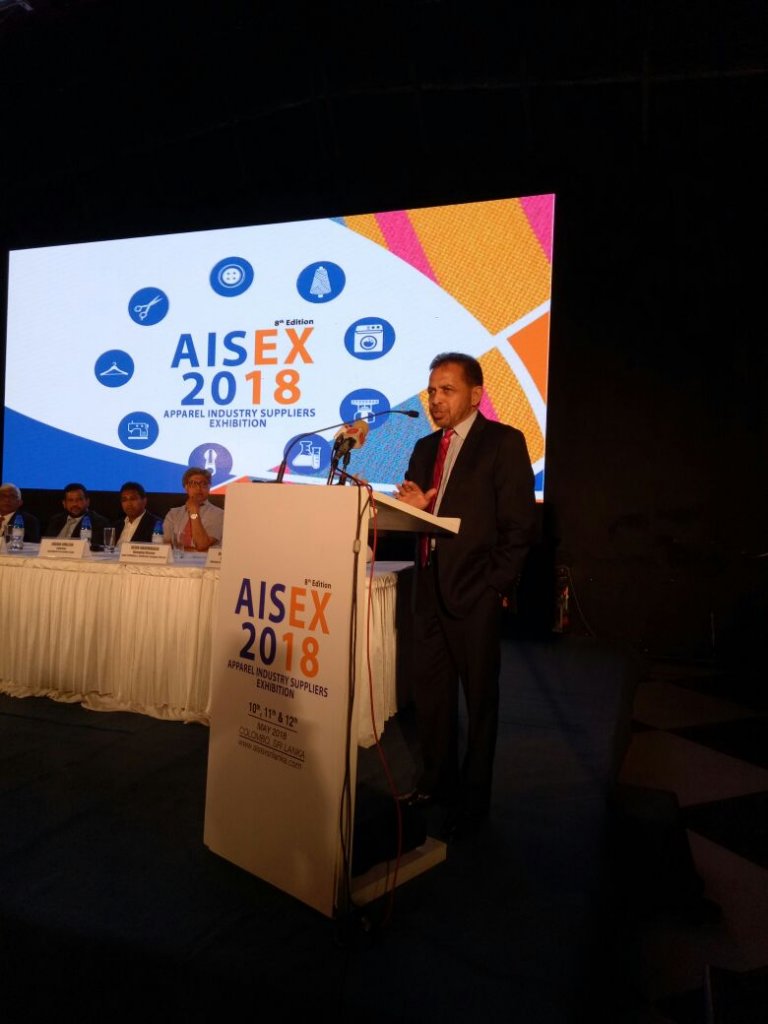

30th Jan 2018, Chairman Pan Liang visited Hon. Ranawaka, the Minister of Megapolis at his private residence in Colombo. Dr. Kohona, the MD of Hairong (Sri Lanka) and Mr. Vidya Amarapala, the Advisor to the Minister also participated the meeting.
At the beginning of the meeting, Dr. Kohona introduced Hairong Group to the Minister, and explained the scope of our current work. Megapolis as a very important functional authority for overall planning of the nation, Hairong is very interested to collaborate in various fields with Megapolis.
Chairman Pan Liang also expressed his gratitude to the Minister to arrange this meeting. Hairong commits itself to investment in infrastructure construction, energy, tourism, real estate and mining industry in different countries in the world. Currently we concentrate on Sri Lanka as our investment center in South Asia. Under the leadership of Dr. Kohona, Hairong (Sri Lanka) has established relations with senior government officials and different Ministries. It’s a great honor to meet your Hon. Minister. The well-know Port City Project, which is dominating by the Megapolis, is significant to the country’s economic development and international status. Hairong Group is also very keen to invest in this kind of large-scale project in Sri Lanka.
Hon. Ranawaka said, Megapolis welcomes Chinese companies come to Sri Lanka, invest in Sri Lanka. Megapolis has made overall planning for the Colombo district. The future plan comprises a financial city, logistics city, passenger hub, industrial city etc.. There are plenty of opportunities, Megapolis is looking forward to the collaboration with Hairong Group.



27 Jan 2018 Colombo. Chairman Pan Liang along with Hairong delegation have visited the Ministry of Tourism Development of Sri Lanka and met Hon. Minister Amaratunga. Hairong (Sri Lanka) MD Dr. Kohona also participated this meeting.
The Hairong delegation was cordially welcomed by the Hon. Minister. Chairman Pan Liang expressed his gratitude for the Hon. Minister to arrange this meeting with Hairong Group. Hairong Group has been committed itself to integrating global resources, building an international Resources, Capital and Technology Platform, whilst focusing on the economic development of the developing countries. Sri Lanka is the Hub of Hairong Group in South Asia. Under the leadership of Dr. Kohona, Hairong (Sri Lanka) is developing the large-scale investments in infrastructure construction, mining, real-estate, tourism and the other industries. Recently as introduced by Dr. Kohona, we knew about this massive mixed-development tourism project which is initiated by the Ministry of Tourism Development. And we knew that this project has been attached great importance by the Hon. Prime Minister and Minister of Tourism. Sri Lanka is a very important one-belt-one-road partner to China, and famous for its god-blessed tourism resources. Hairong is very interested in developing Sri Lanka tourism industry. Hairong will introduce the innovating concepts, the advanced technology and abundant funds to build an international, environmentally friendly, livable and smart new city. It will attract millions of travelers, generate magnificent foreign exchange and create thousands of employment opportunities.
Hon. Amaratunga said, Dr. Kohona is an old friend of his. Dr. Kohona has made great contribution to the country in fighting against the LTTE and protecting the country’s peace and unification. Dr. Kohona enjoys the high reputation and loved by the people. Today Dr. Kohona introduced Hairong Group to the Ministry and made an inspiring proposal to the country’s tourism industry. The Minister is thrilled about the idea that to build a new modern city in Sri Lanka, and the Minister urged the delegation to prepare a detailed proposal regarding this project, he would like to commit himself to promote the implementation of the project.
After the meeting, the Minister invited the Chairman to watch a beautiful national travel promo video. He also warmly explained the sceneries and famous sites displayed in the video. After the video watching, the Hon. Minister invited the Chairman to take a group photo and gave the Chairman a copy of the video and books as gifts.
26 January 2018
The Chairman of Hairong Investment Group Co., Ltd. Mr. Pan Liang, accompanied by Managing Director Dr. Palitha Kohona, accepted an invitation from the president of the National Chamber of Commerce of Sri Lanka (SLNCC) Mr. Sujeeve Samaraweera, to a meeting at SLNCC on Friday.
Mr. Samaraweera welcomed Mr. Pan Liang and his delegation to the meeting for further discussion about joining China Federation of Industrial Economics (CFIE) in Co-developing the Belt & Road Industrial Commercial Alliance (BRICA), and cooperation under the “Belt & Road” Initiative.
Hairong Investments Group Co., Ltd. (hereinafter referred to as “Hairong Group”) as a strategic partner of CFIE, facilitated the MoU signing ceremony between CFIE and SLNCC at Sri Lanka Economy and Investment Conclave (known as SEIC) on 28 November 2017. Subsequently, Hairong Group is authorized by CFIE to invite SLNCC to join BRICA.
Mr. Pan Liang initially introduced the globalization background of BRICA and its magnificent targets, expressing the welcome to SLNCC to join BRICA to utilize and share the opportunities of cooperation and development among members of alliance.
BRICA is a development strategy initially proposed by CFIE, at present, members of alliance are comprised of 29 well-known Industrial & Commerce Associations covering 26 countries in Asia, Europe, Africa, South America and etc. consisting of over 2,300,000 member enterprises. BRICA is the vast platform that facilitates understanding and enhances collaboration among the member enterprises, pursuing extensive bilateral and multilateral activities via combination of online and offline mode, to facilitate the exchange of corporate information among member enterprises and promote cooperation.
Mr. Samaraweera expressed his gladness to the presentation, expecting to join BRICA at the earliest through the procedures of application and expecting to hold the signing ceremony, in the meantime, leading Sri Lankan business delegation to visit China.
